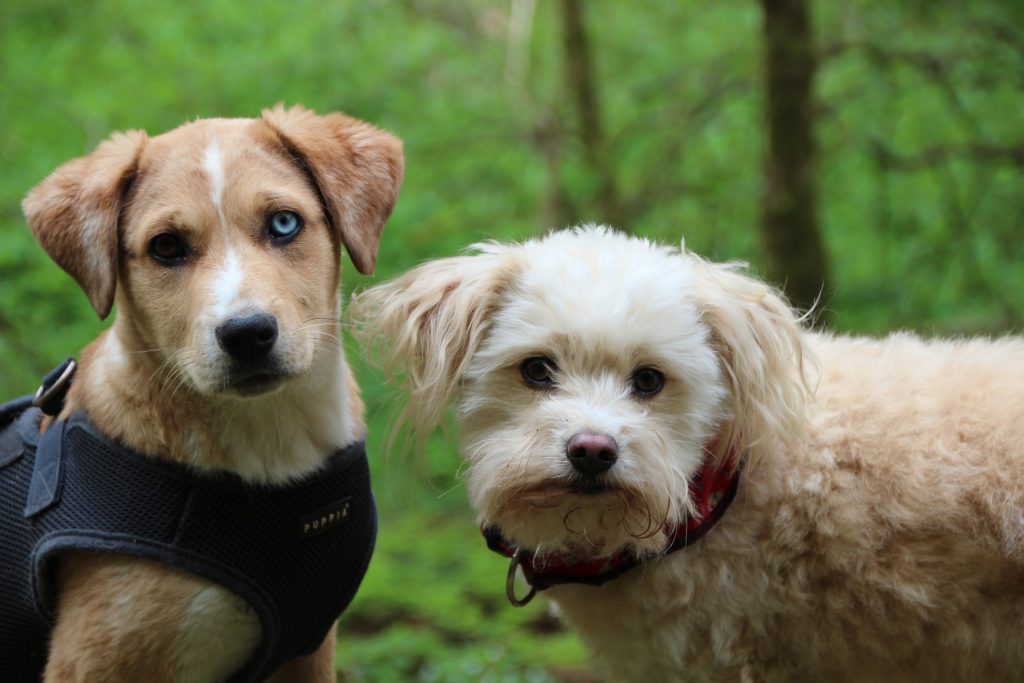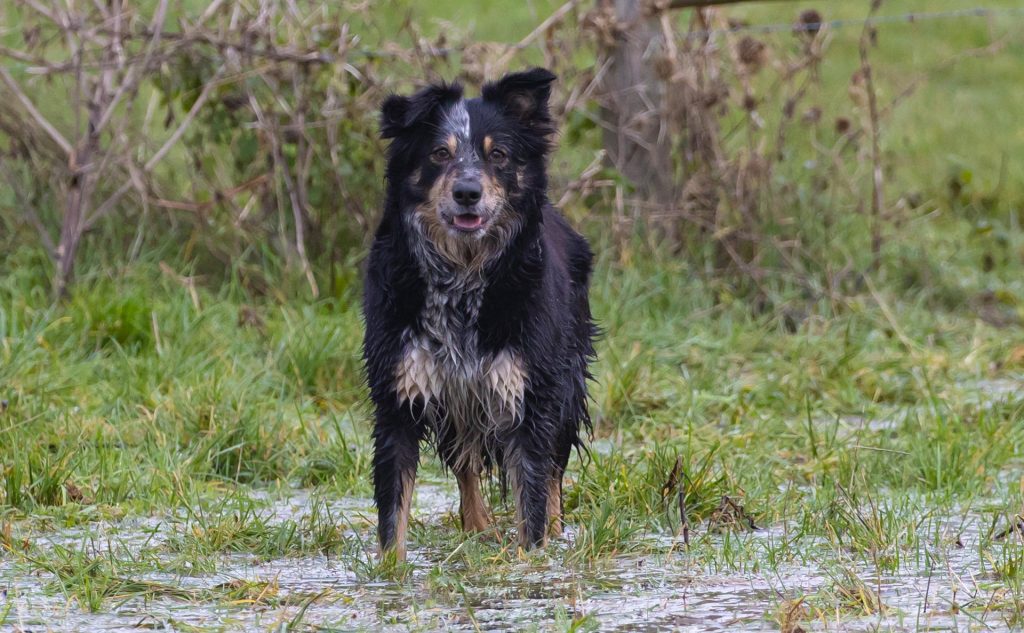I previously wrote about what is meant when we use the term reactivity and some of the different factors that influence reactivity. This month I’ll be talking about how we can use this information to improve our ability to work with reactive dogs. As a reminder, my preferred definition of reactivity is that of affective style. Affective style refers to the way in which an animal responds emotionally to a stimulus. It has three components:
- Activation – How easily is the emotional response triggered?
- Intensity – How strong is the emotional arousal? How quickly does it reach the peak?
- Duration – How long does it take to return to baseline?
The first thing to keep in mind about emotional reactivity in dogs is that it is a complex multifaceted issue. Even if we limited our discussion to leash reactivity it is about much more than just a reinforced behavior of barking and lunging on leash. Although this is certainly part of the cause, at least in some dogs there may be much more going on. For certain dogs, leash reactivity indicates that they respond easily to stimuli in general. It may also mean that their emotions are intense, increase rapidly, and last for a longer period of time. As I discussed last month, intense emotionality is often associated with poor emotional regulation and poor impulse control. This may be caused by issues with executive function which plays an important role in emotional regulation and impulse control. Executive function is also necessary for maintaining attention and focus and being able to display flexible behavior. Emotional reactivity can also show up in many other forms beyond leash reactivity – including barking, fear and hyperarousal in general.

The standard approach to addressing leash reactivity in dogs is to create a positive emotional response to the trigger as well as to reinforce alternative behaviors including an informal heel and different variations on looking at the trigger and then looking at the handler. I do believe that these are beneficial and effective approaches that should continue to be included in the behavior modification plan for leash-reactive dogs. However, the research suggests additional approaches that may enhance both the rate of success as well as the total amount of change possible. Also, what about the underlying emotional dysregulation and reactivity? Can we address these issues directly?
I would argue that yes, we can address these issues directly. There are four things we can do to try to improve emotional regulation:
- Disengagement and focus work
- Medication
- Reduce stress and improve stress coping skills
- Increase positive emotions
Disengagement and focus work

I believe that reinforcing disengagement from a trigger directly addresses emotional reactivity by improving focus and attention. One aspect of focus is being able to inhibit other stimuli that are competing for attention. That means that practicing focus probably practices impulse control as well. Disengagement also increases cognitive flexibility because the animal can obtain reinforcement using a behavior other than barking and lunging. Any improvements in impulse control and cognitive flexibility are also likely to contribute to improved emotional regulation. Why? Cognitive flexibility allows animals to change strategies when an approach is not working. They can continue to try different solutions until they find a way to attain a reinforcer and/or escape an aversive. In this way the animal learns that their behavior matters. That is, they experience increased agency which results in increased control and decreased toxic stress.
Medication

Some medications may be able to improve emotional reactivity. Whenever possible, I recommend referring dogs with this kind of profile to a board-certified veterinary behaviorist. If a veterinary behaviorist is not possible, a veterinarian well-trained in behavior is another option. In addition, many veterinary behaviorists now do vet-to-vet phone consults with primary care veterinarians. Medication is particularly important for dogs that are showing distress or problematic behavior across many contexts or a large percentage of the time. I also recommended it in cases when the triggers are difficult or impossible to manage, when the dog is showing no or very slow improvement, or the bite risk is high.
Reducing stress and improving stress coping skills

Overwhelming (toxic) stress plays a major role in contributing to maladaptive behavior including emotional reactivity. Therefore, decreasing toxic stress is a key component of addressing any behavior issue. A full discussion of how to address stress in dogs goes beyond the scope of this blog post. If you are interested in a deep dive into this topic, check out my book The Stress Factor in Dog: Unlocking Resilience and Promoting Well-Being. However, I will go over some quick techniques here that you can use to help reduce stress.
First and foremost, we want to decrease the frequency and intensity of the stressors. The fastest ways to accomplish this are management (avoiding the triggers) and medication. In the long-run, counter conditioning and desensitization can also decrease the intensity of the animal’s response to certain triggers.
In addition, increasing control and agency (perceived control) has been widely shown to improve animals’ ability to cope with stress. A sense of agency can decrease reactive and defensive behavior in dogs and improve cognitive flexibility which will allow for more goal-directed and less automatic, habitual behavior. There are a number of things we can do to increase agency:
- Use everyday environmental rewards. For example, ask for a brief sit before putting on the leash. If this is too difficult, make it easier. For example, wait for all four feet to be on the floor before reaching for the leash. Once the dog masters the first step, we can ask for slightly more before leashing up (e.g. maintain four feet on the floor while touching the leash with one finger). Using environmental rewards teaches dogs that their behavior matters—that they have the power to influence their environment. In this way, it increases their sense of agency.
- Teaching dogs to work for food rather than giving it out for free also teaches them that their behavior matters because they are directly controlling whether or not they get a reinforcer. Setting food aside and reinforcing throughout the day or hiding it for them to find may be preferable to free feeding for this reason.
- Shaping is another excellent way to increase agency. The dog literally has to figure out how to make food appear.
- Learning about body language (or teaching clients to read body language) allows us to be more responsive to the dog’s emotional state and their needs. This allows us to respect their boundaries by giving them space or changing tactics when something is aversive.
- Allow the dog to investigate their world. Having the ability to explore teaches dogs about cause and effect and teaches them that novel objects are not, in fact, monsters. They learn that they have the ability to make choices about how they interact with their world – and that will increase agency and confidence—remember Moscarello and Hartley’s estimates of agency model.
Another key component is impulse control training. Improved impulse control helps with emotional regulation. Here are some options for improving impulse control:
- Teach leave it. The dog is inhibiting their behavior and waiting for a reinforcer. This is literally the definition of impulse control!
- Use environmental rewards. As described above, this can improve agency. However, this will help improve impulse control as well. Just make sure you start with a very low bar so the dog can succeed!
- Play! Mix short impulse control exercises – like sit or “drop it”—into play sessions. Reward with more play.
Increase Positive Emotions
The final recommendation is to increase positive emotions. For some dogs, this will be absolutely essential for their success. However, it should be beneficial for all dogs. In addition to increasing control, increase predictability, social support, exercise, and enrichment. Find enjoyable activities that the dog and their people can participate in together and manage the environment to minimize the intensity and frequency of stressors. The best activities are those that allow the dogs to engage in species-typical behavior (like running, sniffing, and social interaction) and – you guessed it – increase agency.

In my opinion, emotionally reactive dogs will benefit most from a multi-dimensional approach that targets the triggers as well as the underlying causes of the intense emotions. Using the strategies outlined above, in addition to teaching alternative behaviors and using counter conditioning and desensitization, should maximize your likelihood of success with dogs showing behavior related to intense emotions.
Post your experiences in the comments below—have you tried these methods? What kind of impact do you feel they’ve had on the dogs you work with?
